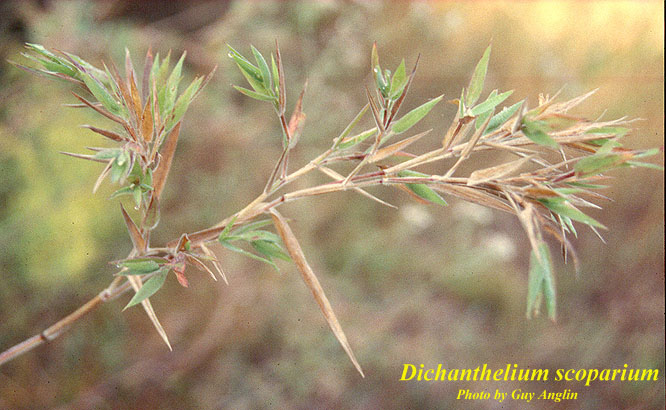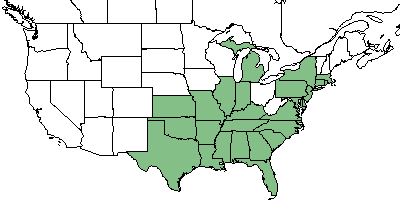Difference between revisions of "Dichanthelium scoparium"
(→Conservation and Management) |
|||
| Line 1: | Line 1: | ||
{{italic title}} | {{italic title}} | ||
| + | Common Names: Velvet Panicum <ref name= "USDA"> [https://plants.usda.gov/core/profile?symbol=CEAM USDA Plant Database]</ref>, Velvet panic grass <ref name="cipolini">Cipollini, M. L., et al. (2012). "Herbaceous plants and grasses in a mountain longleaf pine forest undergoing restoration: a survey and comparative study." Southeastern Naturalist 11: 637-668.</ref> | ||
<!-- Get the taxonomy information from the NRCS Plants database --> | <!-- Get the taxonomy information from the NRCS Plants database --> | ||
{{taxobox | {{taxobox | ||
Revision as of 17:45, 14 June 2018
Common Names: Velvet Panicum [1], Velvet panic grass [2]
| Dichanthelium scoparium | |
|---|---|

| |
| Photo by the Atlas of Florida Plants Database | |
| Scientific classification | |
| Kingdom: | Plantae |
| Division: | Magnoliophyta - Flowering plants |
| Class: | Liliopsida - Moncots |
| Order: | Poales |
| Family: | Poaceae |
| Genus: | Dichanthelium |
| Species: | D. scoparium |
| Binomial name | |
| Dichanthelium scoparium (Lamarck) Gould | |

| |
| Natural range of Dichanthelium scoparium from USDA NRCS Plants Database. | |
Contents
Taxonomic Notes
Synonym: D. acuminatum var. fasciculatum
Variety: Panicum glutinoscabrum, Panicum scoparium (Lamark)
Description
D. scoparium is a perennial gaminoid of the Poaceae family that is native to North America. [1]
Distribution
D. scoparium is commonly found across the southeastern United States, reaching as far west as Texas, and along the east coast up into New England. [1]
Ecology
Habitat
The bunchgrass prefers coarse soils and precipitation of 30-555 inches. It is commonly found in sandy woods, low areas, and disturbed regions. [1]
Phenology
Flowering for D. scoparium occurs between May and July. [3] The basal rosette structure is produced during the fall and winter, the stems of the grass are produced during the spring. [1]
Use by animals
Wild turkeys and white tailed deer use the plant for winter forage. Small mammals and birds feed on the plant. [1]
Conservation and Management
The bunchgrass is considered an endangered species in Indiana. [1]
Cultivation and restoration
D. scoparium has been used as a revegetation source when working to restore a disturbed area.[1]